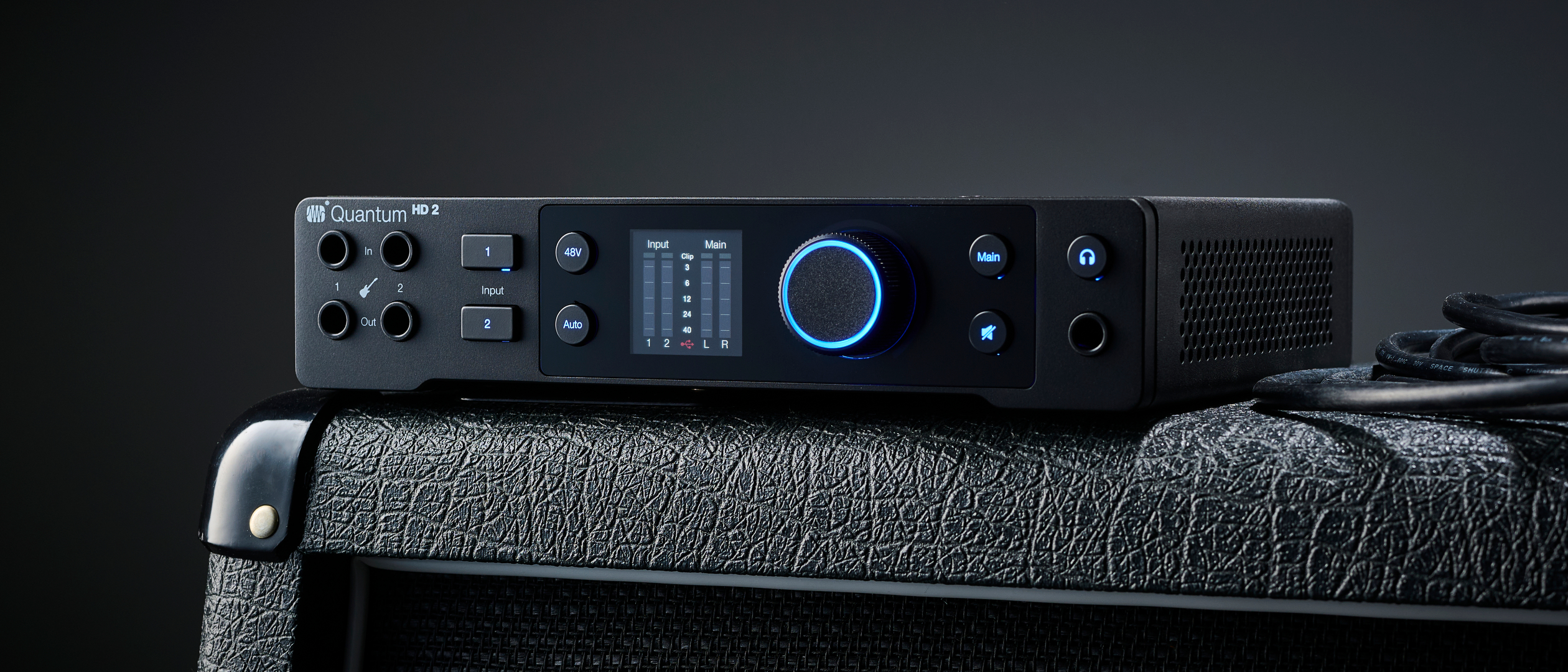Jimi Hendrix, David Gilmour and Slash all love Aeolian – the minor mode that rules over them all. Here’s what makes this scale work
Jimi Hendrix, David Gilmour and Slash are just three of the countless fans of this staple minor mode. Here, Stuart Ryan takes you through the structure of the scale, plus a handful of chords, riffs and licks
Emotive and powerful, if you're looking to move listeners with your guitar playing then the Aeolian mode is a great choice. Also known as the natural minor scale, it’s the sixth mode of the major scale – but what does that mean? Well, it's quite simple. Take a look at the notes of C major:
C D E F G A B
Play these notes starting on C and you're playing the C major scale (also known as the Ionian mode – the 'first' mode). Start on D and you're playing the second mode (D Dorian, as it happens). By the time you get to A you're on the sixth step of the major scale and you've arrived at the Aeolian mode. You can probably guess the notes:
A B C D E F G
So if the notes are the same, what makes the two scales different? The answer, as with all modes, lies with the pattern of intervals in each scale/mode. Compare the intervals of the major scale and the Aeolian mode and you'll see they differ on three steps:
Major scale intervals: Root, major 2nd, major 3rd, perfect 4th, perfect 5th, major 6th, major 7th
Aeolian mode intervals: Root, major 2nd, minor 3rd, perfect 4th, perfect 5th, minor 6th, minor 7th
The minor 3rd, minor 6th and minor 7th mean the Aeolian mode sounds starkly different to the major intervals of the major scale. Put simply:
Major scale: bright, happy
Aeolian mode: Dark, moody
And, though it's a moody blighter, the Aeolian mode does sound stable and solid, making it easier to jam with than, for instance, the Dorian mode or the melodic minor scale. It even contains the notes of the good old minor pentatonic scale, so you're in friendly territory for noodling out melodic lead licks here.
Make sure to watch our video lesson where we'll explain all the ins and outs. We'll give you some Aeolian exercises to try out, plus some chords, riffs and licks that'll take you way beyond the basic structure of the mode.
A Aeolian mode (5th position)
This shape is a great starting place for playing the Aeolian mode. Notice that although you begin in 5th position you'll need to jump to the 4th fret as you reach the third string, before heading straight back to 5th position on the very next string. Despite this, it's an efficient pattern – commonly used and very similar to the good old minor pentatonic scale.
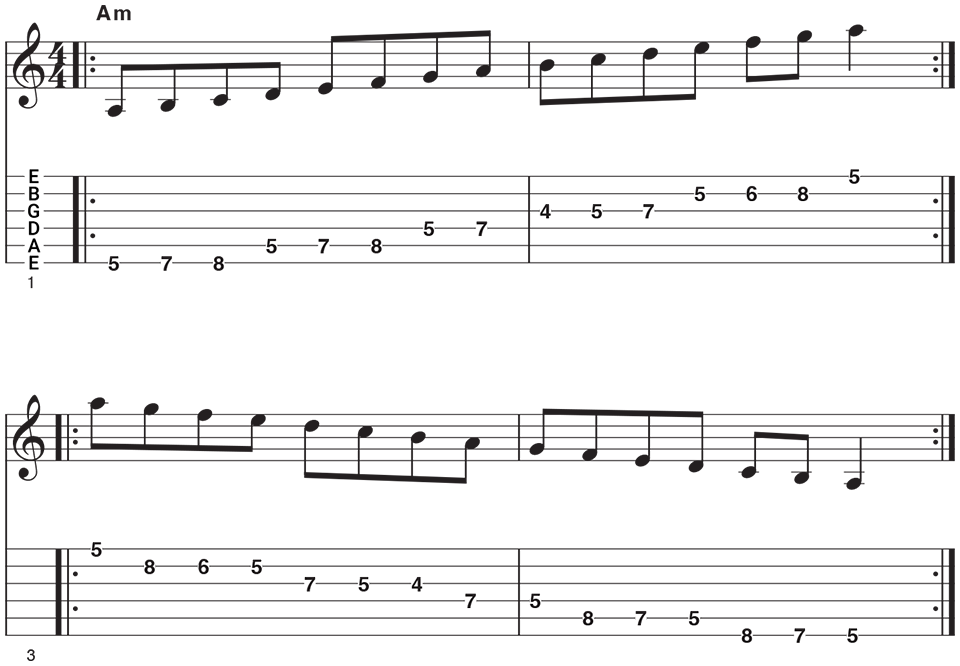
A Aeolian mode (pedal exercise)
Here we're playing the Aeolian mode up and down one string – a great way to get to grips with how the mode sounds. Using the open A note as a repeating pedal tone reveals how each scale note harmonizes with the root.
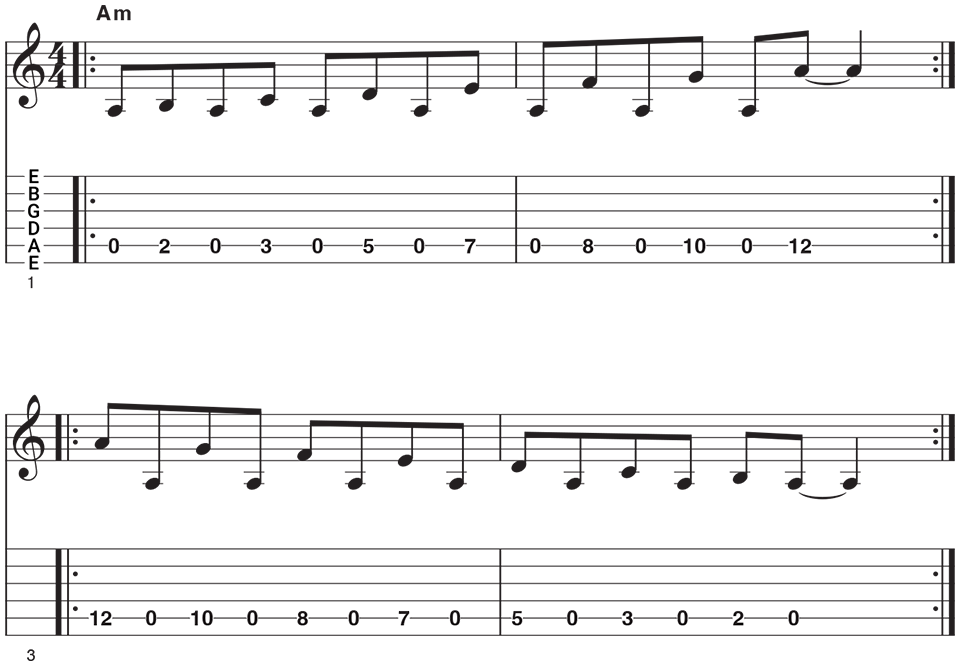
A Aeolian mode (diads)
Here we play the Aeolian mode in a run of major and minor 3rd diads. For example, the opening diad (C-E) is major and the second diad (D-F) is minor. Remember though, every note here is from the A Aeolian mode and the mix of major and minor 3rds is a natural part of the layout of the notes.

A Aeolian mode (triads)
Hopefully you're in familiar territory here with these chords (though the Bmb5 is a little uncommon!), all made up of notes from the Aeolian mode. With this grounding you can start writing your own Aeolian chord progressions. Remember, these chords are called 'triads' because each one has three different notes.
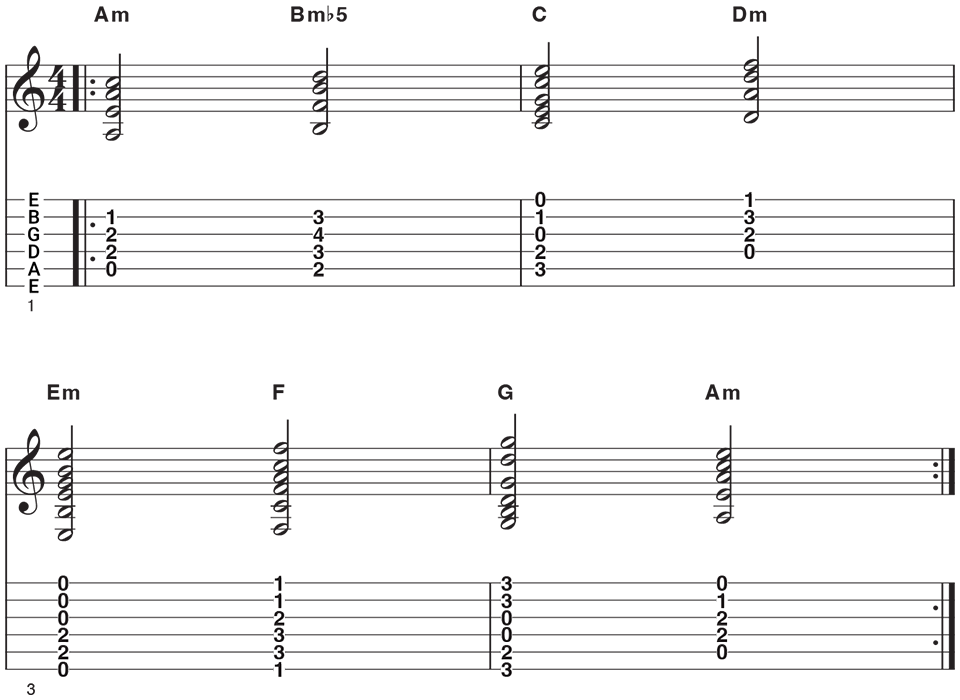
A Aeolian mode (7th chords)
Now the mode is played as 7th chords up the neck, giving you even more options to create chord progressions and loops to solo over. Try playing Am-Fmaj7-G7-Am to hear a classic Aeolian chord pattern.
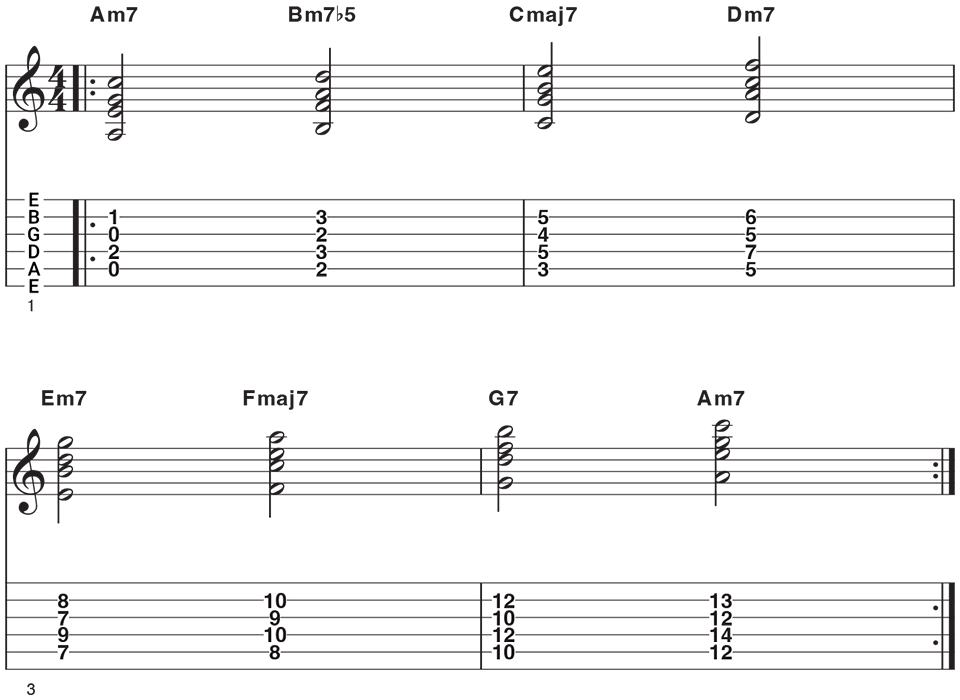
A Aeolian mode (chord riff)
The minor i-iv-v is one of the most common chord progressions and in the Aeolian mode it doesn’t reveal any surprises – except all three chords turn out to be minor. Our Aeolian rhythm guitar riff is a Sheryl Crow-style country-rock idea following the i-iv-v progression. Add some notes from the mode around each chord and you start to create simple riffs that tie the chords together.
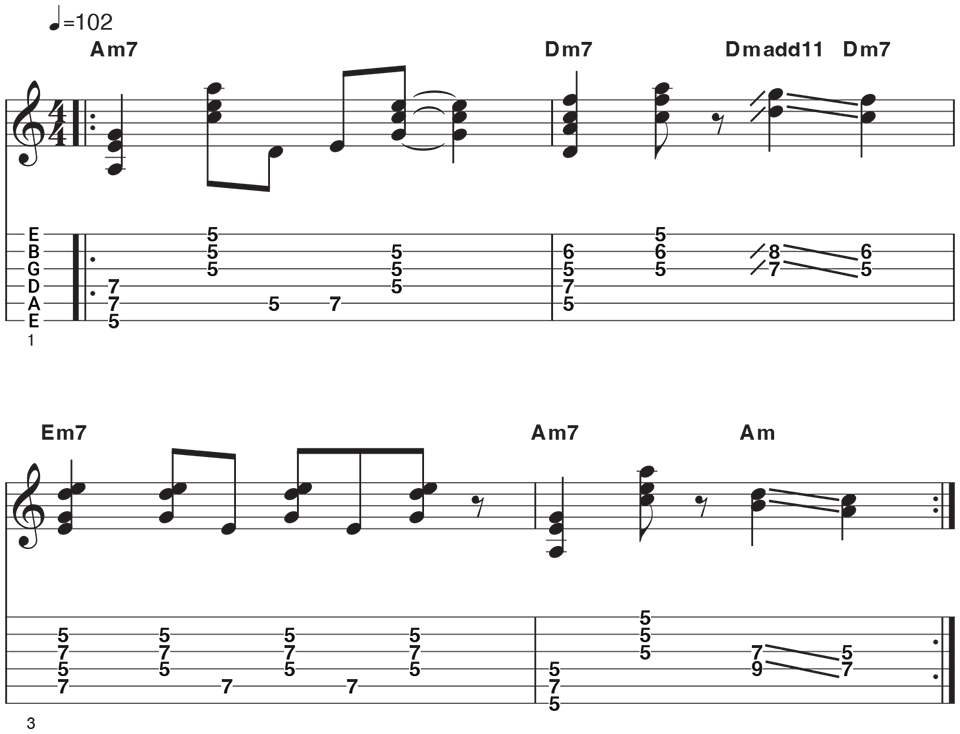
A Aeolian mode (arpeggios)
Not quite as common as the i-iv-v but still very useful, play the ii-v-i in the Aeolian mode and you get the tense sound of Bm7b5-Em7-Am7. Though it can be heard in many styles, this type of progression is especially common in jazz, bossa nova and broadway tunes.
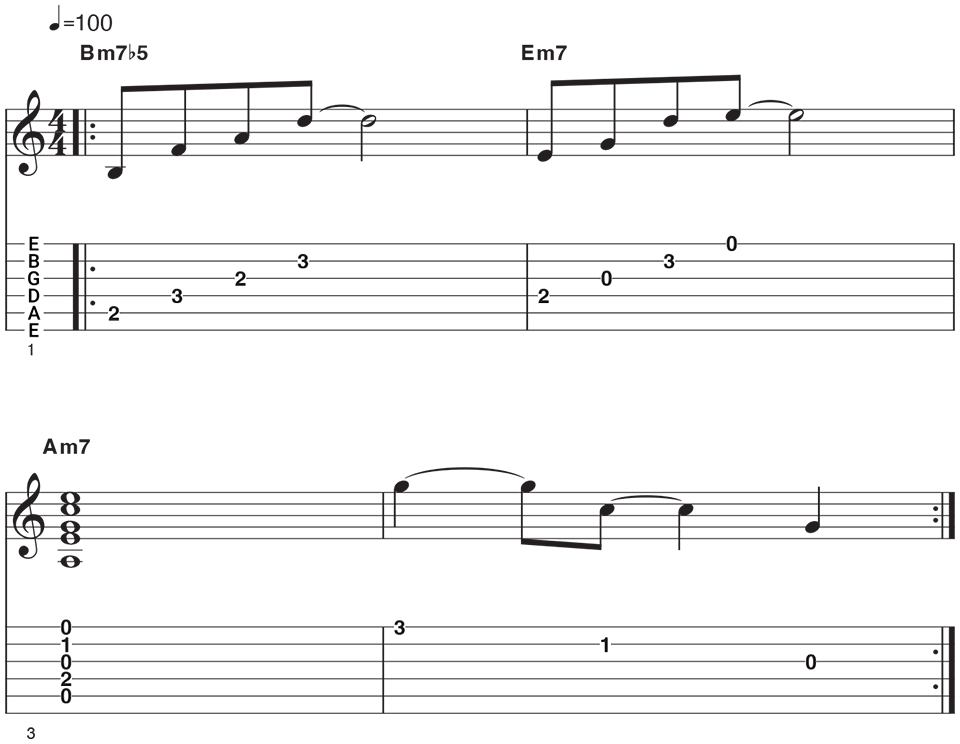
A Aeolian mode (lead guitar lick)
Now it’s time to put it all into practice over the two progressions. When soloing with modes, instead of letting your fingers drift aimlessly, try to build your licks with chord tones (root, 3rd and 5th) as strong openings and endings – and employ any colour tones within the mode for brief tension. In the Aeolian mode that means the tense sounding minor 6th or the minor 7th.
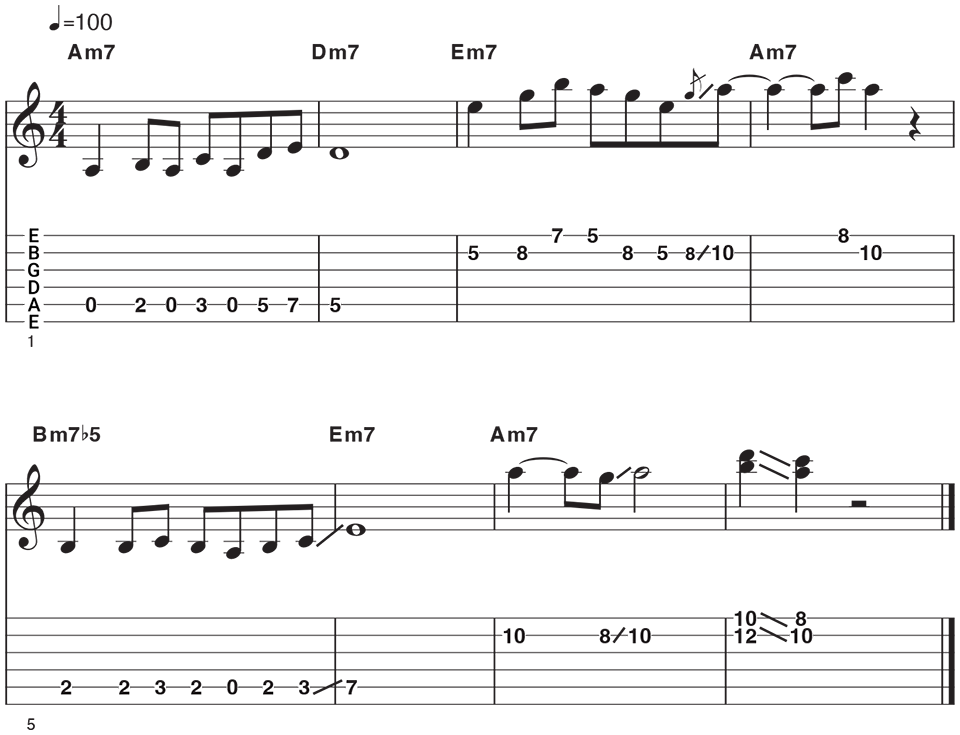
Get The Pick Newsletter
All the latest guitar news, interviews, lessons, reviews, deals and more, direct to your inbox!
Stuart Ryan is best known for his acoustic guitar playing, from Celtic fingerpicking and traditional folk to modern percussive phrasing and fresh interpretations of popular pieces. He has released several solo albums, written pieces for UK examination boards and created nine tutorial books ranging from acoustic guitar arrangements to Americana styles.

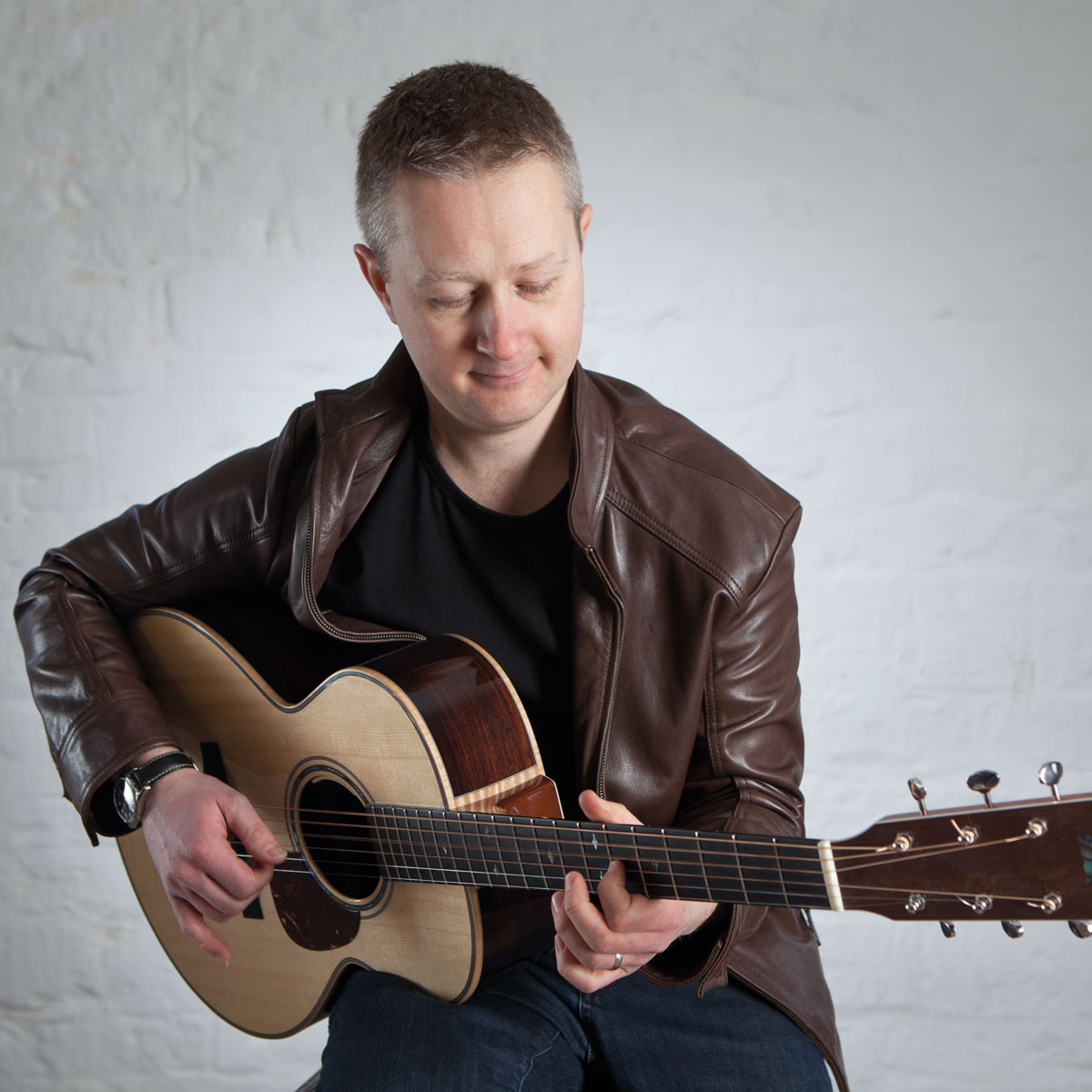









![Joe Bonamassa [left] wears a deep blue suit and polka-dotted shirt and plays his green refin Strat; the late Irish blues legend Rory Gallagher [right] screams and inflicts some punishment on his heavily worn number one Stratocaster.](https://cdn.mos.cms.futurecdn.net/cw28h7UBcTVfTLs7p7eiLe.jpg)
